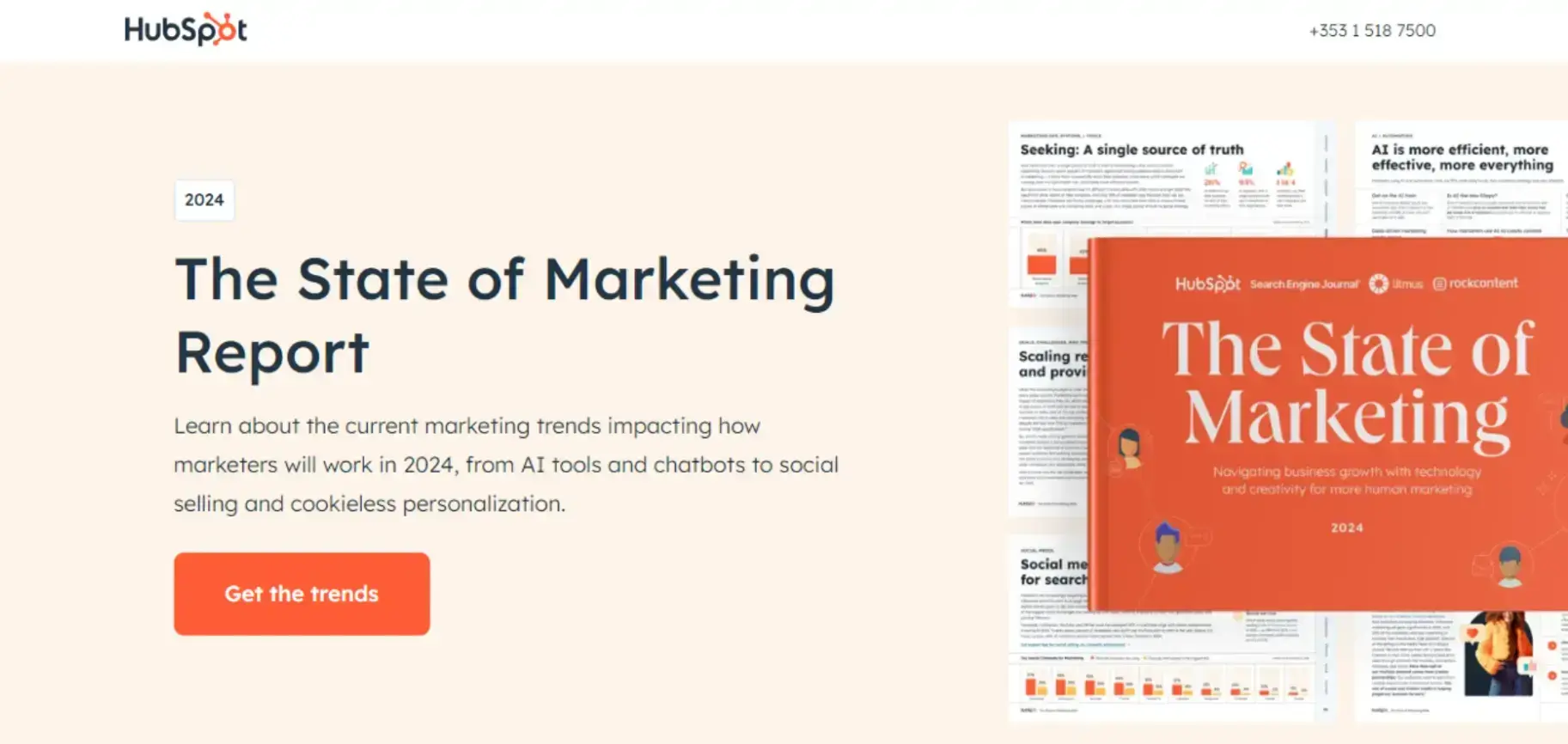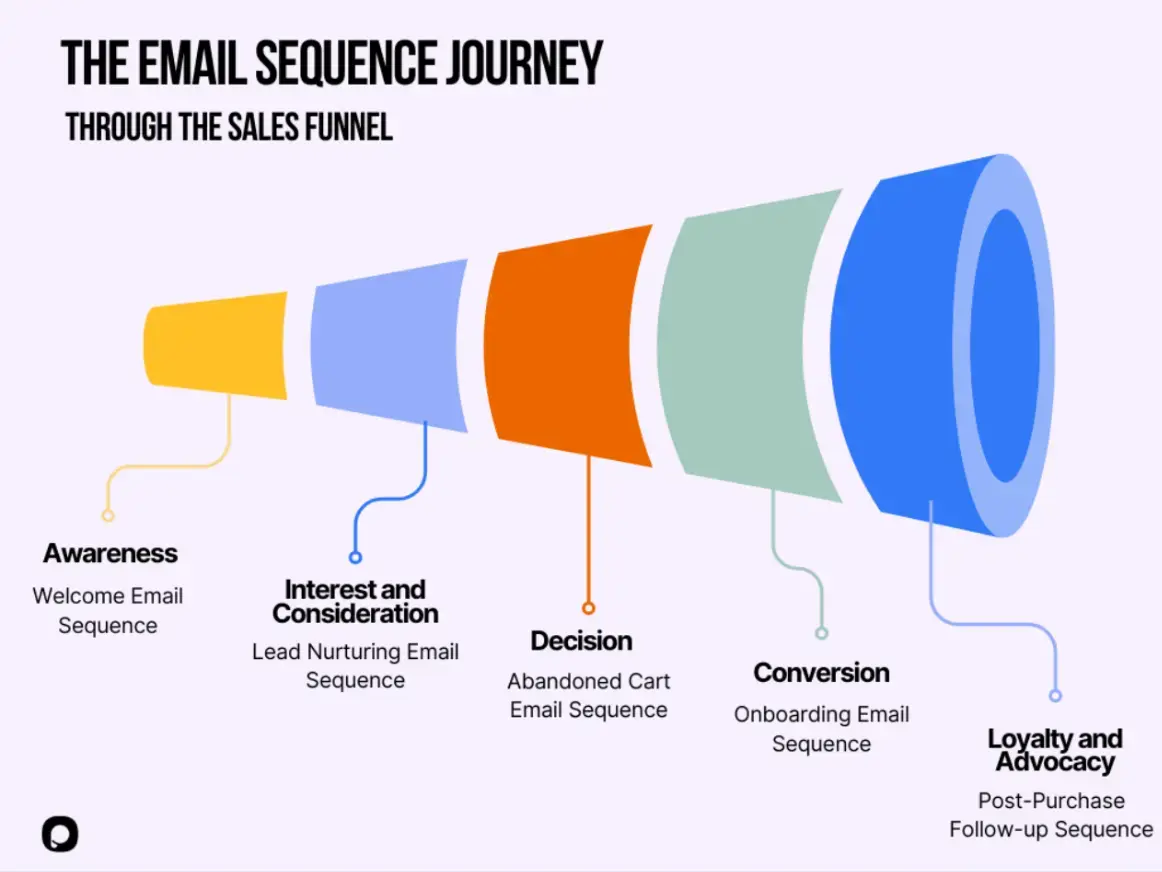Are your email campaigns struggling to generate quality leads? You're not alone. Many small business owners find it hard to develop an effective email marketing campaign for lead generation.
But don't lose heart. I've got some game-changing strategies for you.
In this article, I'll walk you through three powerful email marketing tips for lead generation campaigns. I’ll teach you how to harness personalization, create compelling gated content, and design email sequences that turn your website visitors into high-quality leads.
Article Shortcuts:
- Harness the Power of Personalization and Segmentation
- Create Compelling Gated Content as Lead Magnets
- Optimize Email Drip Campaigns for Nurturing and Converting Leads
![]()
Source: Freepik
1. Harness the Power of Personalization and Segmentation
Ever received an email that felt like it was written just for you? That's personalization in action.
When you combine it with smart segmentation, you've got a recipe for email marketing success that can dramatically improve your lead generation efforts.
Let's break it down.
Personalization means tailoring your email content to each recipient. It's like having a conversation with a friend — you remember their likes, dislikes, and what's happening in their life.
Segmentation, on the other hand, is about grouping your subscribers based on specific criteria. Think of it as organizing a party where you seat people with similar interests together.
Here's how you, too, can put these powerful strategies to work.
-
Segment your list
Email list segmentation works if you categorize your subscribers meaningfully. Consider splitting them based on factors that matter to your business like:
-
- Purchase history
- Website behavior
- Demographics
- Engagement level
The email below is a perfect example of segmentation in action, specifically targeting gymgoers:

Source: Really Good Emails
-
Personalize your emails
This is where the magic happens. Use dynamic content to change parts of your email based on subscriber data.
For example, you could show different product recommendations to different segments.
To further enhance the visual appeal and professionalism of your emails, consider incorporating an Email Signature Banner. This subtle design element can help reinforce your brand and create a lasting impression on recipients, contributing to the overall effectiveness of your saas email marketing strategy.
For a subscriber who frequently browses your catalog of tech gadgets, you can show the latest smartphone. Meanwhile, for a fashion-forward customer, the newest handbag collection might be of interest.
Don't forget about subject lines, too. Including the recipient's name or referencing their recent actions can make a big difference.
Here’s an example of a personalized email. Notice that the message includes the recipient’s name in the greeting (“Hi, Smile Davis”):

Source: Really Good Emails
However, personalization goes beyond just using someone's name. It's about tailoring your entire messaging to speak directly to each segment's interests and pain points.
If you're doing B2B sales lead generation, for instance, your language and offers should reflect the challenges and goals of businesses in your target industry.
-
Track campaign performance
Of course, to know if your efforts are paying off, according to the Attrock guide, you must track the right email marketing metrics to help you identify which metrics you should track based on your goals.
For lead generation, such metrics include:
- Open rates
- Click-through rates
- Conversion rates
- Forwarding/sharing rates
This might seem like a lot but don't worry. You don't need to be a tech wizard to implement these strategies. Tools like Mailchimp, Klaviyo, TargetBay, and ActiveCampaign offer features for effective list segmentation and email personalization.
For B2B companies with large prospect pools, outsourcing email marketing can remove the burden of coordinating campaigns and tracking performance so your team can focus on converting leads into customers.
2. Create Compelling Gated Content as Lead Magnets
Imagine a treasure chest full of valuable information. Now, picture that chest behind a gate.
The key? An email address. That’s gated content in a nutshell, and it’s a powerful weapon to boost website engagement for lead generation.
Why does this matter? Because it turns casual website visitors into high-quality leads that you can nurture through email marketing. Here's how you can create irresistible gated content:
-
Choose the right type of content
Gated content comes in many flavors. Pick one that best suits your audience's needs and your campaign objectives.
For instance, you might use ebooks or whitepapers for deep dives into industry topics. Alternatively, you can use templates or worksheets as tools to help the user solve specific problems.
Additionally, exclusive webinars are live or recorded sessions where an expert shares useful tips and tricks. And case studies are real-world examples of how your product helped your customers.
The point is each content type has its best use cases. So, choose accordingly.
-
Address your audience's pain points
What keeps your customers up at night? Create content that solves these problems.
For example, if you sell natural skincare products, offer a "7-Day Routine to Reduce Acne Naturally (Without Harsh Chemicals)."
This addresses a common concern (acne) among skincare enthusiasts and promises a solution aligned with your product's unique selling point (natural ingredients).
-
Craft an irresistible landing page
Your landing page is a digital storefront for gated content. It needs to convince the viewer that the content is worth giving up their email. Apply these key elements to create a landing page that converts:
- Use a clear, benefit-driven headline.
- Include bullet points highlighting key takeaways.
- Add a simple form to collect essential information.
- Include social proof (like testimonials) to build trust.
Here’s an example of a well-designed lead magnet landing page from HubSpot:

Source: HubSpot
-
Balance gated and ungated content
Not everything should be behind a gate. Offer some free content to build trust and showcase your expertise.
This could be blog posts, short videos, or infographics. These free samples give visitors a taste of what you offer. When they like what they see, they're more likely to give their email for premium content.
A good rule of thumb: gate your most valuable, in-depth content.
-
Leverage social proof
Ever bought something because a friend recommended it? That's social proof in action.
Show that other people find your content valuable. This builds trust and encourages more sign-ups. You can use testimonials from people who've downloaded your guide.
Reviews and ratings work well, too. They show that real people found your content helpful.
Alternatively, you can show the number of people who've signed up. You might say, "Join 5,000+ beauty enthusiasts who've transformed their skincare routine!"
You can use social proof Shopify apps to display real-time signups and create a sense of urgency.
Remember, quality trumps quantity. An amazing piece of gated content can outperform dozens of mediocre ones. Put in the effort to create something truly valuable, and you'll see your email list grow.
By offering gated content, you're not just collecting email addresses. You're starting a relationship with potential customers who have shown interest in your expertise. This sets the stage for nurturing these leads through targeted email campaigns, which we'll explore in the next section.
3. Optimize Email Drip Campaigns for Nurturing and Converting Leads
You've got their email or contact information, now what? It's time to nurture those leads into customers.
Email sequences are your secret weapon, guiding subscribers from curiosity to purchase. You might have heard of marketing funnels at some point. Those apply here, too.
In email sequences, prospects also go from awareness through interest and consideration, desire, and conversion to loyalty and advocacy.
You can have a separate sequence for each stage, as shown in the image below:

Source: Popupsmart
Here are some tips to make them work for your business:
- Welcome new subscribers warmly: Start with a series of 3-5 emails over two weeks. Introduce your brand story and values. Let’s say you run a skincare brand. Share what makes your beauty products special. You could offer a small discount or free sample to encourage that first purchase. This is your chance to make a great first impression.
- Create targeted drip campaigns: Remember segmenting your list from the first tip? It’s time to use it. Say you segment your list based on product interest. You can send tailored product recommendations and tips. Use behavior triggers, too. If someone views a product but doesn't buy it, follow up with a gentle reminder.
- Tell your brand story: Share the inspiration behind your products. Maybe you started your skincare line because of your own struggles with sensitive skin. Highlight customer success stories. Use before-and-after photos—with permission—to show real results.
- Boost engagement: Use clear, benefit-driven subject lines that promise value. Keep your emails mobile-friendly, as a majority of emails are opened on phones. You may also include interactive elements like quick polls about skincare concerns or quizzes to find the perfect shade match.
Remember, nurturing leads is about building relationships. Each email should provide value, whether it's helpful tips, exclusive offers, or engaging content.
Frequently Asked Questions
1. How often should I send marketing emails?
Aim for 1-2 emails per week. However, the ideal frequency depends on your audience and marketing goals. Test different schedules and monitor engagement rates to find your sweet spot.
2. What's a good open rate for email marketing campaigns?
The ideal open rate varies by industry, but generally, 15-25% is considered healthy. Focus on improving your subject lines and the sender name to boost open rates.
3. How can I avoid my emails going to spam folders?
Use a reputable email service provider, maintain a clean email list, avoid spam trigger words, and encourage subscribers to add your email to their address book.
4. Is it worth investing in email automation tools?
Yes, email automation tools can significantly improve efficiency and effectiveness. They allow for personalized, timely emails based on subscriber behavior, which can boost conversion rates.
5. How do I measure the success of my email marketing campaigns?
Key metrics include open rates, click-through rates, conversion rates, and ROI. Use these metrics to continually refine your strategy and improve performance.
Conclusion
And there you have it—my three tried and proven email marketing tips for lead generation campaigns.
Remember: personalize, create irresistible gated content, and nurture leads with thoughtful email sequences. Start small, test often, and watch your conversions grow.
Author Bio
Gaurav Sharma is the founder and CEO of Attrock, a results-driven digital marketing company. Grew an agency from 5-figure to 7-figure revenue in just two years | 10X leads | 2.8X conversions | 300K organic monthly traffic. He also contributes to top publications like HuffPost, Adweek, Business 2 Community, TechCrunch, and more.
Gravatar Email ID: gauravs@attrock.com
Social Accounts: Twitter, LinkedIn, Pinterest, Instagram, YouTube & Facebook



